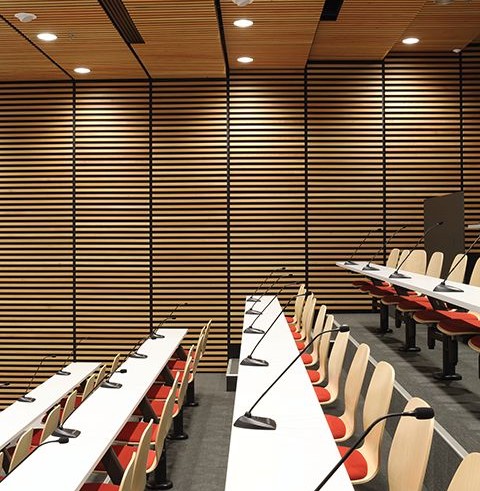Controlling noise issues in wood buildings

By Tim Preager
Wood has long been regarded as a viable material for construction thanks to numerous factors, namely design flexibility, efficiency, and affordability—reasons making it especially popular for smaller housing projects. Add in a smaller carbon footprint than concrete or steel, and wood can also be seen as a much more sustainable choice.
On January 1, 2015, wood-frame construction became even more attractive when changes to the Ontario Building Code (OBC) raised the limit from four to six storeys for wood-frame buildings. This is a catch-up since most European Union and several North American jurisdictions—including British Columbia—already allow six-storey wood-frame buildings. While the changes still do not permit use of mass timber construction such as cross-laminated (CLT) and glued-laminated (glulam), the implications are still evident.
Though wood construction provides an opportunity to builders, it is expected the changes will also benefit the Ontario economy. Cheaper construction costs should result in an increase in affordable housing. A report commissioned by the Building Industry and Land Development Association (BILD) estimated the costs savings of using wood frame for six-storey buildings could amount to about $30 to $40 per square foot—15 to 20 per cent less than a concrete structure.
Since wood-framed buildings are faster to construct, it would result in quicker occupancy for residents. With the construction industry using more wood, the increased demand for forestry products could offer a tremendous employment opportunity across Ontario.
Like many other changes to codes, there are questions and concerns around the safety and quality of wood-framed buildings. Critics claim expanded wood-frame construction still pose fire risks, but new safety rules requiring stairwells to be built with non-combustible materials and combustion resistant roofs make it much safer.
From an acoustical standpoint, there are also concerns that cannot be ignored. How soundproof are wood-framed buildings? Can residents come to enjoy the same privacy in wood structures as they have come to expect from steel and concrete buildings? The short answer to both of these questions is ‘yes,’ but only when the building is properly designed.

Challenges with wood
Wood construction buildings offer significant acoustical challenges, in particular related to sound isolation between adjoining spaces and throughout the building. The material tends to be lighter than concrete, which makes it harder to stop the transmission of sound.
Just as water can easily travel through tiny cracks, sounds does the same thing. Noise can travel through not only the air, but also the structure itself and through flanking paths. Flanking is sound transmitted through an indirect path such as through ducts, duct walls, the floor, or even gaps and cracks. Any small hole or path that may not consist of enough elements to stop a sound can help carry that sound. In wood buildings, a lot of flanking paths can exist where sound travels through assemblies other than the wall itself, such as the floor, joists, cavities, pipe penetrations, and ceiling cavities. This means occupants are more susceptible to noise issues when units are not correctly designed.
Further, wood-framed buildings tend to be rigidly connected to other support structure. Once sound hits one of these structures, it can travel quite easily and efficiently throughout the building.
According to the new building code, units must be designed to have a minimum sound transmission class (STC) of 50. In older buildings that have been converted to lofts, the STC could be anywhere from 35 to 45 if the acoustical design is not considered in the retrofitting. As a result, neighbouring conversations and activities are easily carried from one unit to the other.









